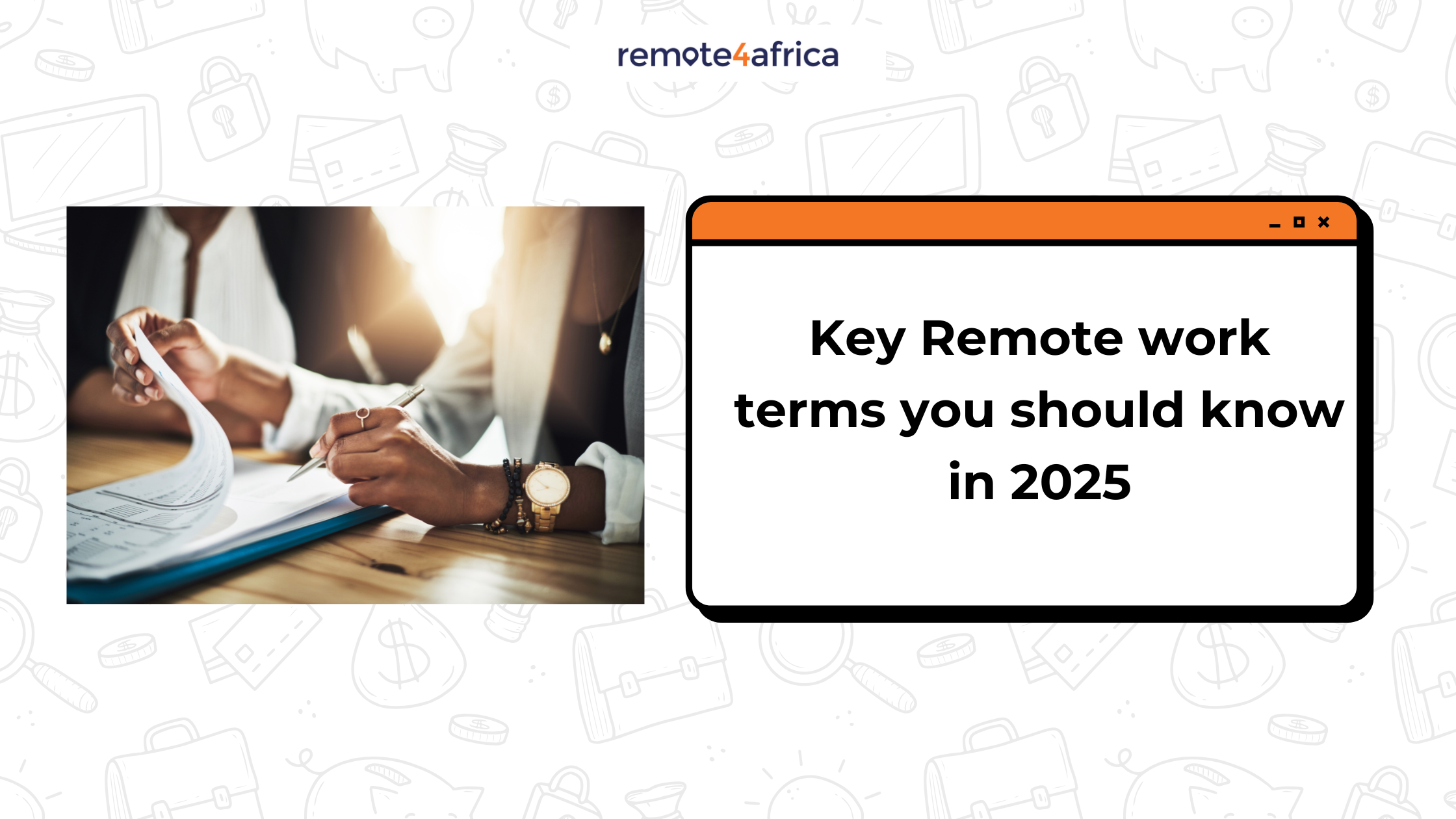20 Terms You Must Know As a Remote Worker in 2025
Remote work is now a new normal and no longer a trend. As companies continue to embrace remote work systems and the technologies that enhance them, their scope begins to grow even wider.

You need to stay updated to understand and stay updated on key terminologies that will help you navigate the remote work scene. We have helped you compile 20 terms that you should know as a remote worker in 2025.
20 Terms You Must Know As a Remote Worker in 2025
1. Asynchronous Communication
Communication that does not require an immediate response, allows team members in different time zones to work flexibly. Examples include email, recorded video updates, and project management tools like Trello or Asana.Learn more about asynchronous communication
2. Synchronous Communication
Real-time communication that requires participants to be online simultaneously, such as video calls, live chats, and virtual meetings via Zoom or Microsoft Teams.
3. Virtual Private Network (VPN)
The VPN is a security tool that encrypts internet connections, ensuring data privacy when accessing company systems remotely.
4. Cloud Computing
Using internet-based services like Google Drive, Dropbox, or OneDrive to store and access files from anywhere, eliminating the need for physical servers.
5. Digital Nomad
A person who works remotely while travelling, leveraging technology to stay connected with employers or clients from various locations.
6. Coworking Space
A shared office environment where remote workers can rent desks, collaborate, and access office amenities without being tied to a corporate office.
7. Gig Economy
A labour market characterized by freelance and contract work rather than permanent employment, facilitated by freelance platforms like Upwork and Fiverr.
8. Remote-First
A company that prioritizes remote work as the default mode, ensuring that workflows and policies cater to a distributed workforce.
9. Hybrid Work Model
A flexible arrangement that allows employees to split their work time between home and an office, offering both autonomy and in-person collaboration opportunities.
10. Time Zone
Understanding and managing work schedules across multiple time zones to ensure efficient collaboration and meeting planning.
11. Ergonomics
The science of designing a workspace that enhances comfort and efficiency, reducing health risks like back pain and eye strain.
12. Burnout
A state of physical and emotional exhaustion caused by prolonged stress is often linked to blurred work-life boundaries in remote settings.
13. Virtual Collaboration Tools
Digital platforms like Slack, Notion, and Microsoft Teams facilitate communication and teamwork among remote employees.
14. Cybersecurity
Practices and tools designed to protect digital information from cyber threats, such as two-factor authentication (2FA) and password managers.
15. Bandwidth
The amount of data that can be transmitted over an internet connection, affects video call quality and file transfer speeds.
16. Remote Desktop
A technology that allows users to access and control their office computer from a remote location, ensuring seamless work transitions.
17. Freelancing
A form of self-employment where professionals work independently for multiple clients, managing their schedules and workload.
18. Telecommuting
Working from home or any remote location instead of commuting to a traditional office, is often facilitated by cloud-based tools.
19. Work-Life Balance
The equilibrium between professional responsibilities and personal time is essential for maintaining productivity and well-being.
20. Softphones
Software-based phone applications that enable internet calls via laptops or mobile devices, replacing traditional landlines.
Conclusion
Understanding these key terms will help you adapt to and thrive in the evolving work environment in 2025. By keeping up with these concepts, you can stay ahead in the ever-changing world of remote work, ensuring flexibility, productivity, and career longevity.
